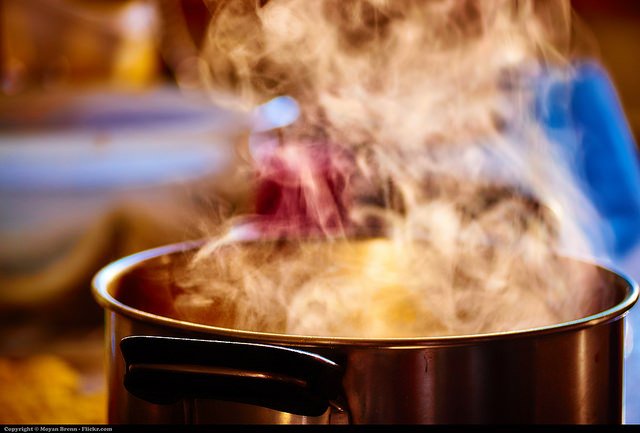We are perpetually, perennially confused about what to eat.
“Is butter good for you or bad?”
“I just read that kale is bad for you.”
“Should I eat nuts or not?”
When I was a student at New York City’s Natural Gourmet Institute in the late 90s, Annemarie Colbin, the school’s founder, casually tossed out a remark I never forgot:
“Americans don’t eat food, they eat concepts.”
She was spot on.
Before the advent of our industrialized food system, replete with refrigerators, supermarkets and TV commercials, we learned how to eat from our mothers, aunties and grandmas.
Just like Mama Bird dropping a worm in Baby Bird’s mouth, our female tribal elders fed us the foods that their intuition, observation and direct experience had determined were best.
Their knowledge drew from tribal foodways, the collective eating habits and culinary practices that knew which mushrooms could nourish you and which could kill you. Foodways hold collective wisdoms such as the indigenous Mexican practice of nixtamalization, or soaking corn in limewater to improve digestion.
Traditional peoples around the globe—those few who have so far dodged the corporate food juggernaut—still rely on taste, tradition and terroir to navigate their gustatory choices. They enjoy robust health and sane food habits.
People in the west, by contrast, are an unhealthy people obsessed with healthy eating.
Our tribal foodways have been supplanted by celebrity “experts,” book authors, apps, recipe blogs, journalists, advertisers, food labels, and the latest diet craze.
We judge what’s best for us not by listening to our bodies but by what Dr. Oz says. Not by how we feel, but by the grams of fat in the nutrition label. Not by taste but by abstractions such as “60 % protein, 30 % carbs, and 10 % fat.”
We rely more heavily on concepts than on innate wisdom. As a result, we’re out of our bodies and into our heads when it comes to having a clue about what’s for dinner.
It’s not our fault. We’re in a tough predicament.
American culture prides itself on rebellion against culture. We are a nation of innovators ever desiring to break old molds and make things better.
We are also a people-less people whose wisdom roots have dissolved in the melting pot.
As a descendant of Ellis Island immigrants from Sicily, my grandparents fed me from their garden and taught me to cook while reminding me that I was an “Americana” who didn’t need to know where my food came from. As their genetic emissary in the New World, my assimilation imperative was to forget the garden and shop in the supermarket.
So here we are. Now what?
While we can’t return to the roots-and-tubers lifestyle of our forebears, we can reclaim our body-based wisdom of knowing what truly nourishes us.
Here’s a start:
Try my Mindful Eating Meditation:
Set aside about 15 minutes to do this exercise. Bring your writing tools with you.
Get some food. Whatever it is you typically eat, whether you think it’s “good” or “bad.”
Eliminate all distractions (phone, music, other people, even Elephant Journal).
Take three deep, conscious breaths.
Bring all your attention to your food. Notice the colors, textures, shapes, smells. What do you observe? How does your body feel in relation to this food? Take notes.
Take a few more deep breaths. Bring one bite of food to your mouth.
Be as fully present to that first bite as you can. What is your mouth saying about this food? What is your stomach saying? What other sensations are arising? Take notes.
Continue eating, focusing as much attention as possible on every bite. How does your experience change as you eat?
Can you find the point where your body says “Enough”?
~
Don’t worry if it’s hard to do this exercise. As with other such practices, progress trumps perfection.
In time, the body-mind split will reconcile, and your body can become a trustworthy navigator through the dizzying swirl of conceptualized food choices.
~
Relephant Read:
The Upside of Compulsive Eating.
~
Author: Marcella Friel
Editor: Renee Jahnke
Image: Moyan Brenn-Flickr











Read 4 comments and reply